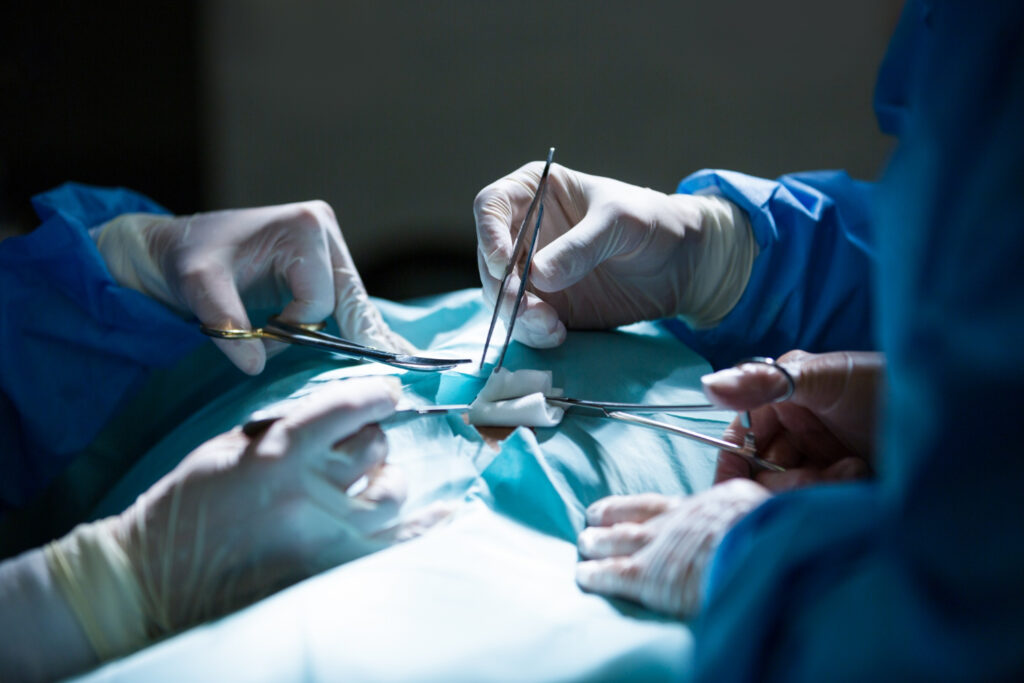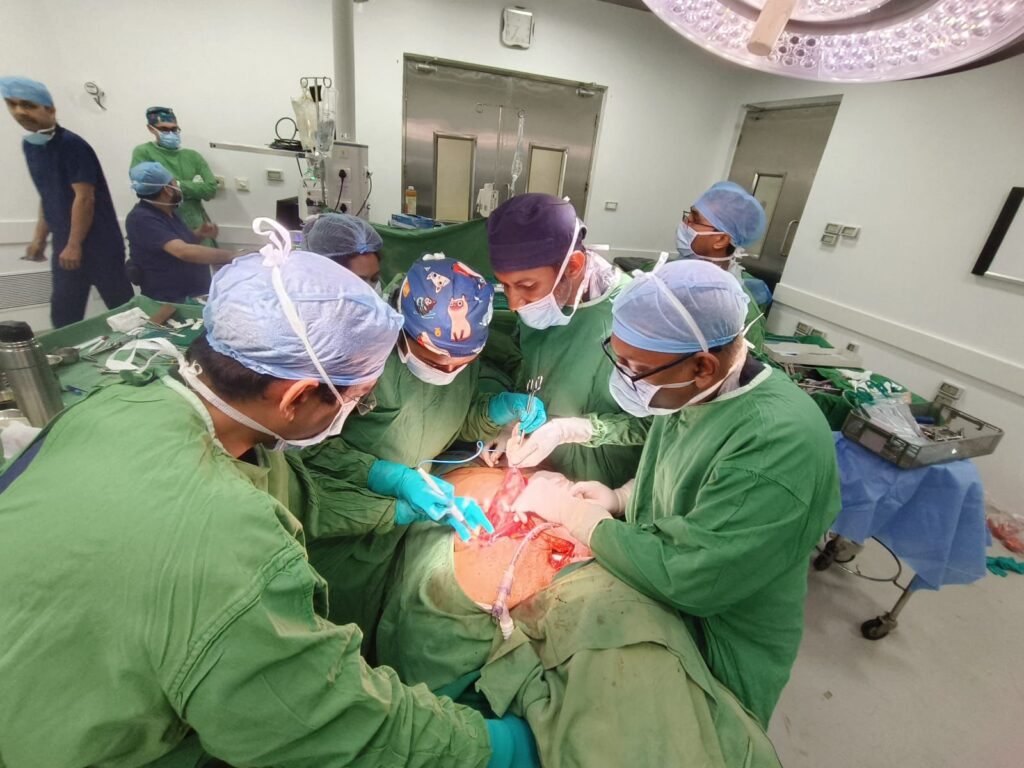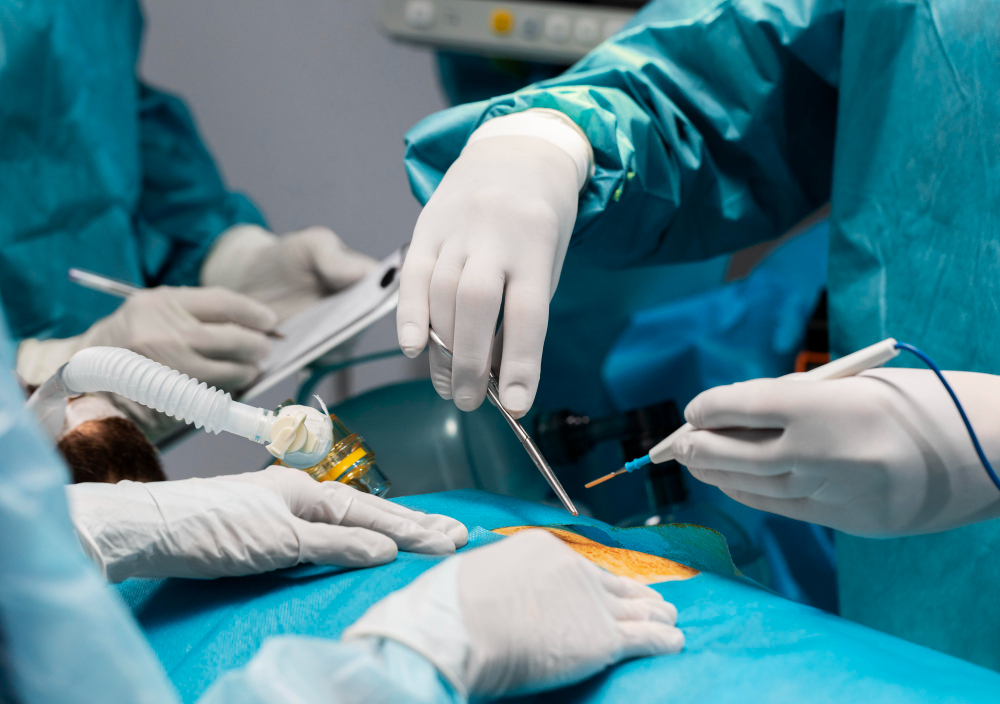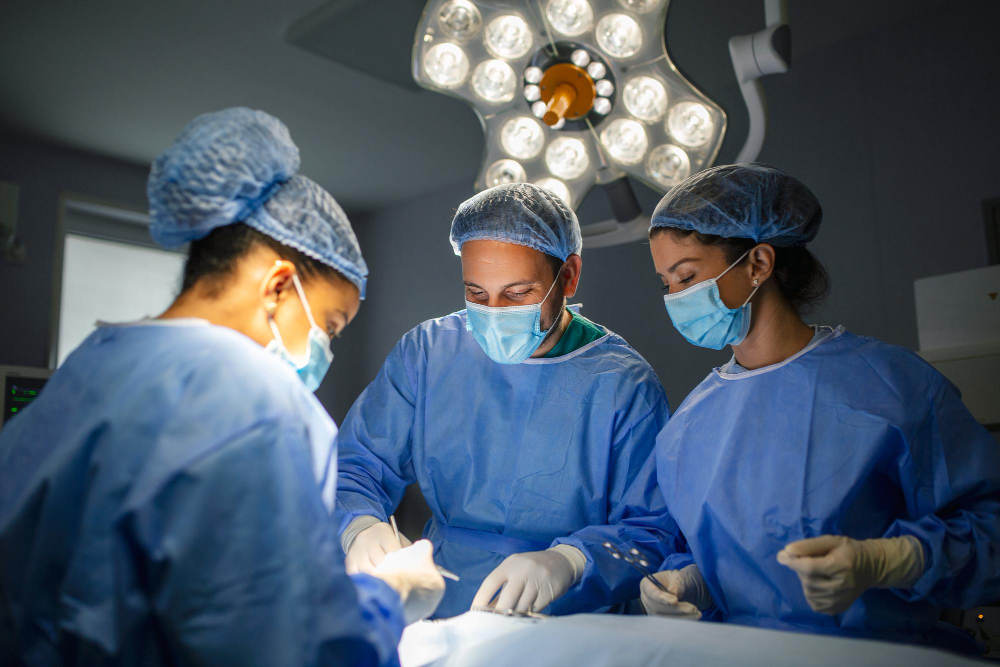Microsurgery is a highly specialized field that uses advanced techniques and magnification to repair or transfer tiny blood vessels, nerves, and tissues. Dr. Sannia Salim is trained in complex microsurgical procedures that restore both form and function—particularly in cases of cancer reconstruction, trauma, or congenital defects.

The Anterolateral Thigh (ALT) Flap is a versatile tissue flap taken from the thigh, commonly used in head and neck, limb, or breast reconstruction. It offers skin, fat, and sometimes muscle for soft tissue coverage while minimizing donor site morbidity.
Dr. Sannia uses ALT flaps to achieve excellent aesthetic and functional results in reconstructive surgeries requiring significant volume.

The Free Fibula Flap is the gold standard for reconstructing jawbones or long bones after trauma or cancer resection. It involves transplanting a segment of the fibula bone, along with its blood supply, to recreate the bone elsewhere in the body.
This technique is particularly valuable in oral cancer, facial trauma, or limb salvage procedures.

The SCIP flap offers thin, pliable tissue harvested from the groin region, making it ideal for small to medium defect reconstruction—especially in the head, neck, hand, or lower limb.
Dr. Sannia uses this minimally invasive flap when a discreet donor site and a natural-looking outcome are important to the patient.

IGAP flaps use tissue from the lower buttock area to reconstruct breast or pelvic defects without sacrificing underlying muscle. This microsurgical option provides ample soft tissue volume and excellent contour, especially in complex oncologic reconstructions.
It’s a muscle-sparing solution designed for long-term durability and natural aesthetics.

The Radial Artery Forearm Flap (RAFF) is a reliable option for reconstructing delicate areas like the mouth, tongue, or hand. It provides thin, flexible tissue with excellent blood flow, ensuring high success rates in functional restoration.
Dr. Sannia uses this flap particularly in head and neck reconstruction and small soft tissue repairs.

At the heart of every microsurgical procedure is vascular anastomosis — the precise joining of tiny arteries and veins to reestablish blood supply. Using a high-powered microscope and microsurgical instruments, Dr. Sannia ensures seamless blood flow between donor and recipient sites, which is critical to flap survival and healing.
Her expertise in microsurgical vascular techniques underpins the success of every tissue transfer.
Microsurgery involves highly specialized procedures performed under a microscope to reconnect tiny blood vessels, nerves, or tissues—often critical in complex reconstruction. These surgeries require precision, expertise, and a structured recovery plan to ensure success:
Hospital stay: Typically 5–10 days, depending on the procedure and healing response
Initial recovery: Close monitoring in the early post-operative period to ensure proper blood flow to the graft or flap
Light activity or work: Resume in 4–6 weeks, depending on the surgical site and overall health
Strenuous activity or rehabilitation: Begins after 8–12 weeks, guided by physiotherapy and functional progress
Final outcomes: Visible and functional improvement over 3–6 months, with continued nerve or tissue regeneration possible up to a year or more
Scarring: Carefully managed with precise incisions; may be improved over time with scar therapy if needed
All microsurgical procedures are performed in state-of-the-art, accredited surgical facilities. Dr. Sannia follows advanced microsurgical protocols to minimize risks such as flap failure, infection, or thrombosis. A multidisciplinary approach—including close post-op care and rehabilitative therapy—is key to ensuring the best possible functional and aesthetic outcomes.